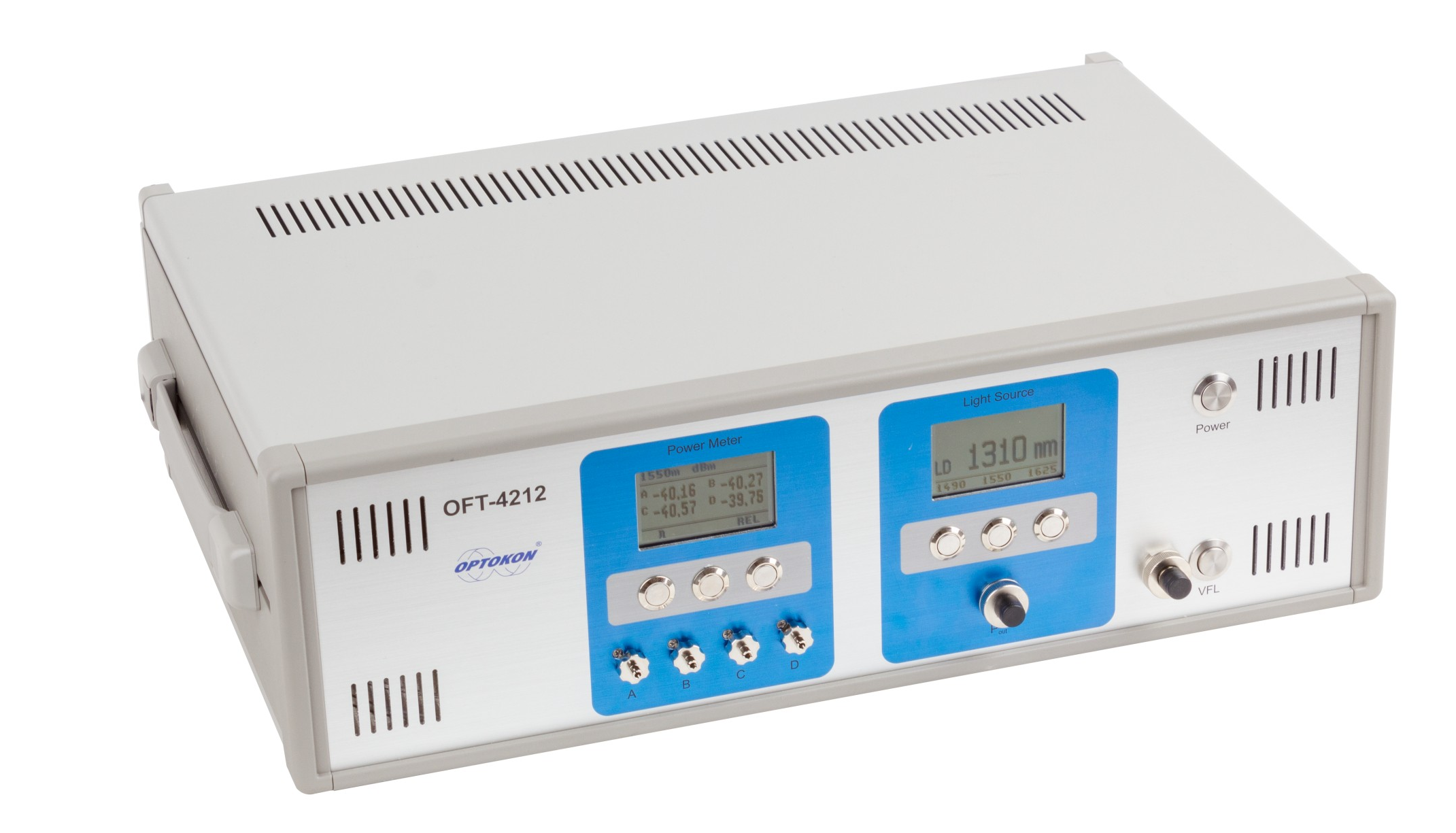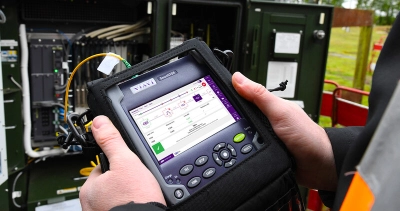The role of optical fibre diameter analyzer improves fiber manufacturing
Wiki Article
Comprehending How an Optical Measurement System Boosts Precision in Industrial Applications
Optical measurement systems play an important duty in boosting accuracy throughout different commercial applications. By leveraging sophisticated technologies such as laser interferometry and 3D imaging sensors, these systems offer high-resolution, non-contact measurements. This capacity reduces the threat of damaging sensitive elements while ensuring accuracy. The effect of these systems prolongs beyond simple dimensions. Exploring their benefits, applications, and future fads reveals a complicated landscape of innovation and difficulties that qualities closer assessment.The Fundamentals of Optical Measurement Systems
Optical measurement systems function as vital devices in numerous industrial applications, offering exact information collection and analysis. These systems utilize light as a main ways of measurement, leveraging optical concepts to analyze dimensions, positions, and surface attributes of things. They incorporate components such as lasers, video cameras, and sensors, which interact to record high-resolution photos and information.The technology enables non-contact measurements, reducing the risk of damaging sensitive elements. Optical measurement systems are flexible, discovering energy in high quality control, setting up confirmation, and dimensional evaluation throughout various markets. They are specifically reliable in settings where traditional measurement techniques may fail, such as measuring complex geometries or observing rapid motions.
As markets remain to progress, the combination of optical measurement systems will certainly continue to be crucial for making sure accuracy and efficiency, eventually improving product high quality and functional performance in numerous making procedures.
Secret Technologies Behind Optical Measurement
Key technologies such as laser interferometry techniques and 3D imaging sensors play a vital duty in the performance of optical measurement systems (optical measurement system). These modern technologies allow accurate measurements and detailed evaluation in different industrial applications. Understanding their functionalities is essential for using the complete capacity of optical measurement systemsLaser Interferometry Techniques
Numerous laser interferometry strategies have revolutionized the area of optical measurement, providing extraordinary precision and accuracy in various commercial applications. These techniques make use of the interference of systematic light waves to determine range, displacement, and surface area irregularities with nanometer-level accuracy. Common approaches include Michelson interferometry, which divides a beam of light and assesses phase changes, and Fabry-Pérot interferometry, known for its high resolution in determining small modifications. Additionally, laser Doppler interferometry utilizes regularity shifts to analyze velocity, making it very useful in dynamic dimensions. The adaptability of these methods enables their integration into varied manufacturing processes, improving quality assurance and making sure adherence to rigorous tolerances. As a result, laser interferometry proceeds to play a critical function ahead of time commercial measurement standards.3D Imaging Sensors
Developments in measurement modern technology have actually led to the advancement of 3D imaging sensing units, which play a substantial role in optical measurement systems. These sensors catch three-dimensional information via numerous techniques such as triangulation, time-of-flight, and structured light. By precisely rebuilding the form and measurements of things, 3D imaging sensing units boost the precision of measurements in industrial applications. They offer real-time comments, assisting in quality assurance and guaranteeing that elements fulfill rigorous requirements. In addition, their capacity to run in tough environments, such as varying lighting problems, makes them invaluable in manufacturing processes. As industries progressively adopt automation, the integration of 3D imaging sensors into optical measurement systems is expected to drive further enhancements in efficiency and accuracy.Advantages of Optical Measurement in Sector
Conventional measurement techniques have long been the criterion in commercial setups, optical measurement systems provide considerable advantages that boost accuracy and effectiveness. These systems use light to catch information, leading to high-resolution measurements that are typically unattainable with traditional techniques. The non-contact nature of optical measurements lowers the threat of damaging delicate components throughout the analysis process. Furthermore, the speed of optical measurements permits fast data acquisition, promoting timely decision-making in fast-paced commercial environments.Optical systems are versatile, with the ability of gauging different products and shapes without the demand for substantial recalibration. This versatility adds to improved operations and productivity. The automation capacity of optical measurement systems decreases human error, making certain consistent high quality control. Overall, the combination of optical measurement technology represents a dynamic change towards improved precision and reliability in industrial procedures, ultimately resulting in boosted item quality and functional performance.
Applications of Optical Measurement Systems

Optical measurement systems play a critical function in boosting manufacturing process optimization by giving precise data for decision-making. These systems ensure quality assurance assurance with real-time tracking and evaluation of manufacturing metrics. As industries progressively take on these technologies, their influence on effectiveness and item reliability ends up being obvious.
Production Refine Optimization
Enhancing production procedure performance is increasingly reliant on the combination of optical measurement systems. These systems supply real-time information on various specifications, permitting manufacturers to evaluate procedures with a high level of accuracy. By enabling accurate measurements of dimensions, surface attributes, and product buildings, optical measurement systems help with the identification of inefficiencies and bottlenecks in assembly line. The instant comments from these systems equips engineers to make educated decisions, leading to optimized machining, assembly, and finishing processes. The capacity to keep an eye on conditions continuously permits for adaptive adjustments, decreasing downtime and waste. As markets go for greater performance and minimized operational costs, optical measurement systems become important tools for boosting production process optimization.
Quality Assurance Guarantee
The integration of optical measurement systems substantially effects quality assurance guarantee in industrial setups. These systems give exact and non-destructive measurements, enabling makers to detect problems and inconsistencies early in the production procedure. By utilizing innovative imaging techniques, such as laser triangulation and interferometry, optical measurement systems ensure that elements meet stringent requirements. This helps with real-time tracking, reducing waste and lessening the threat of damaged items reaching the marketplace. In addition, the information collected can be examined to fine-tune production processes even more, leading to continuous improvement. Ultimately, the fostering of optical measurement systems boosts dependability and consistency in top quality control, fostering better self-confidence amongst stakeholders and consumers alike in the final robotic vision products provided.Case Researches: Successful Applications
Various sectors have actually effectively incorporated optical measurement systems to enhance their functional efficiency and item quality. For circumstances, in the auto sector, a famous supplier took on a laser triangulation system to keep track of the alignment of vehicle elements. This implementation substantially lowered setting up mistakes, resulting in enhanced safety and security and lowered costs.In the aerospace sector, a leading aircraft manufacturer used optical width for precision measurements of generator blades, attaining a reduction in manufacturing tolerances and far better performance criteria.
A customer electronics business applied optical measurement modern technology during the production of smartphone displays, resulting in enhanced high quality control and a reduction in malfunctioning items.
These case research studies highlight how optical measurement systems not just enhance accuracy however likewise add to total operational effectiveness, showing their value across numerous industries. By dealing with specific requirements, these systems have proven to be crucial tools in modern commercial applications.
Difficulties and Limitations of Optical Measurement
While optical measurement systems use significant benefits in various commercial applications, they are not without their challenges and limitations. One significant problem is sensitivity to environmental conditions, such as temperature level variations, humidity, and dust, which can adversely affect measurement precision. Additionally, optical systems usually call for accurate placement and calibration, making them prone to human mistake during arrangement and operation. Another limitation is the potential for disturbance from ambient light, which can distort measurements and demand complicated filtering system strategies. Moreover, specific materials and surfaces may provide difficulties, as reflective or transparent attributes can bring about inconsistent readings. The cost of high-grade optical elements and systems can also be a barrier for some industries, restricting prevalent adoption. Ultimately, specialized training is commonly required for personnel to effectively run and keep these systems, adding to the general intricacy and functional obstacles.Future Fads in Optical Measurement Innovation
As developments in innovation remain to shape commercial procedures, the future of optical measurement systems is poised for substantial evolution. Arising patterns indicate a shift in the direction of boosted combination of artificial knowledge and artificial intelligence, allowing systems to evaluate information in real-time, identify patterns, and improve decision-making procedures. Furthermore, the advancement of miniaturized sensors and advanced optics is anticipated to result in even more portable and flexible measurement services, making them accessible for a larger array of applications.Furthermore, the incorporation of 3D imaging and high-resolution capacities will certainly enable unmatched accuracy in measurements, which is important for sectors such as aerospace and auto. The press for automation and Market 4.0 will certainly additionally drive the demand for optical measurement systems that can easily interface with various other innovations. As these fads unravel, optical measurement systems will likely come to be essential to achieving better effectiveness and precision across different commercial fields.

Frequently Asked Inquiries
How Do Optical Measurement Systems Contrast to Standard Measurement Methods?
Optical measurement systems offer greater precision and speed compared to traditional methods - optical fibre diameter analyser. They decrease human mistake, improve data collection effectiveness, and provide real-time results, making them progressively favored in different commercial applications for specific dimensionsWhat Industries Advantage one of the most From Optical Measurement Systems?
Optical measurement systems greatly profit markets such as aerospace, auto, and electronic devices. Their capability to provide high-precision measurements improves quality control, lowers manufacturing errors, and improves general effectiveness, making them crucial in affordable manufacturing atmospheres.Can Optical Measurement Systems Be Customized for Certain Applications?
Optical measurement systems can certainly be tailored for specific applications. By adjusting specifications such as wavelength, resolution, and calibration techniques, sectors can customize these systems to satisfy special accuracy and precision requirements efficiently.What Is the Upkeep Demand for Optical Measurement Systems?
The maintenance demands for optical measurement systems usually include routine calibration, cleaning of optical parts, and software updates. Abiding by these practices assurances accuracy, integrity, and long life of the measurement tools in different applications.Just How Do Ecological Aspects Influence Optical Measurement Precision?
Ecological variables, such as temperature level changes, moisture, and dirt, greatly effect optical measurement precision. These elements can distort light paths and interfere with sensing unit analyses, eventually compromising the integrity and precision of measurements in commercial settings.Report this wiki page